Before Facebook, before YouTube, two years before the first production EV, and around the time that email and the internet was starting to take shape, back in May 1994, Mazda Japan opened its modest but revered museum, and called it the M-Trip.
Renovated during Covid lockdown and reopened in May 2022, the new Mazda museum is a similalry personal experience, small on the scale of global automotive museums, but big for Mazda, and featuring arguably the biggest, most revered Japanese automotive star of them all.
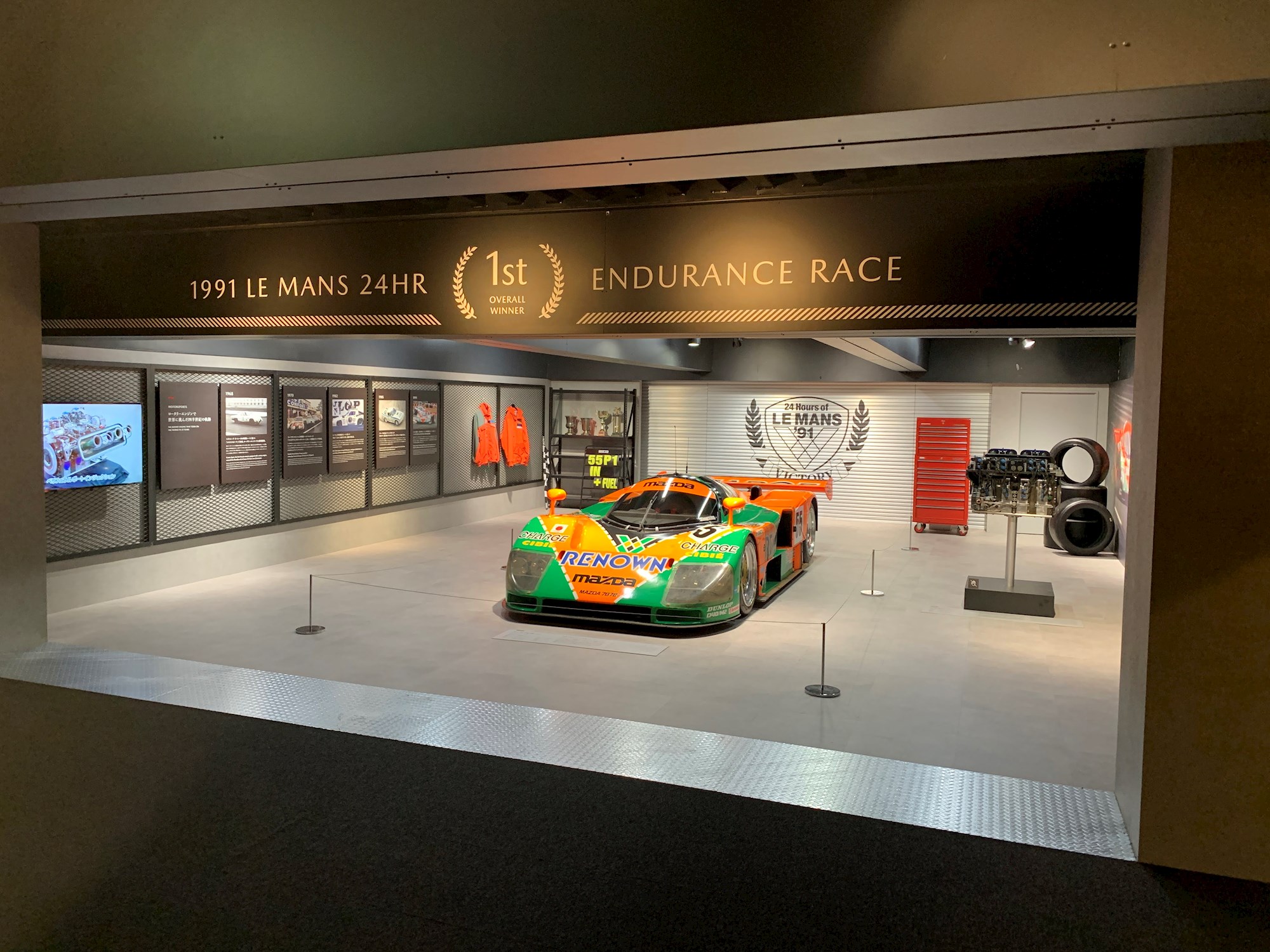
Broken down into 10 main exhibition zones, the Mazda Museum charts and showcases the brand's history, from its beginnings as a cork and vehicle manufacturer, through to its famous cars, engines and historical success, such as its Car of the Year victories, its crash-testing and its paint process evolution.
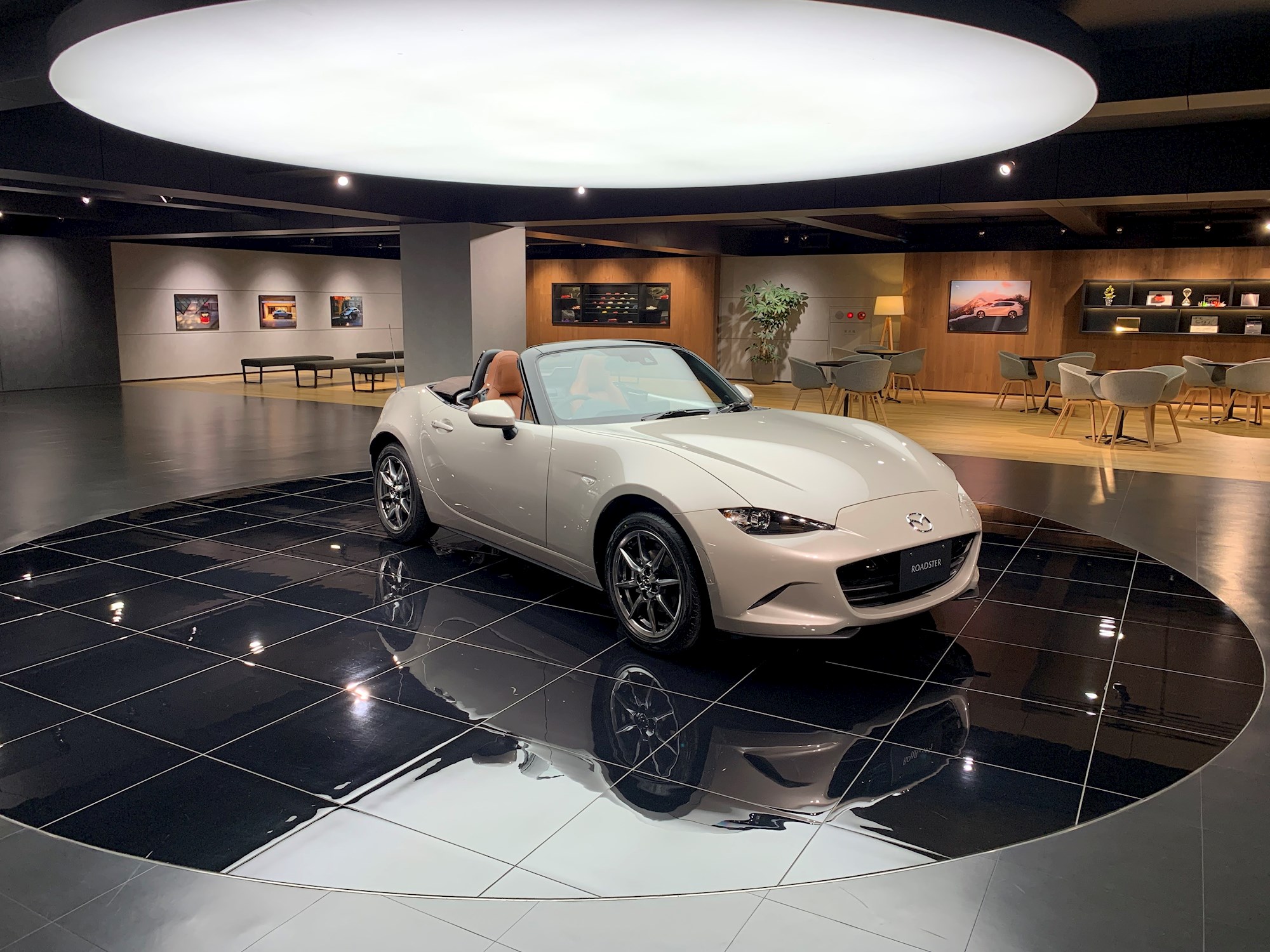
The entrance is grand, superbly lit and a place to absorb, relax and get to know the brand. In the large lobby area sits a centerpiece – on our visit, the ND MX-5 – along with a number of other key models, in various definitions. The new MX-30 was on display, along with the new CX-60, aligning with the purpose of our visit, while the gift shop offers a small but very significant range of scale models, and gifts.
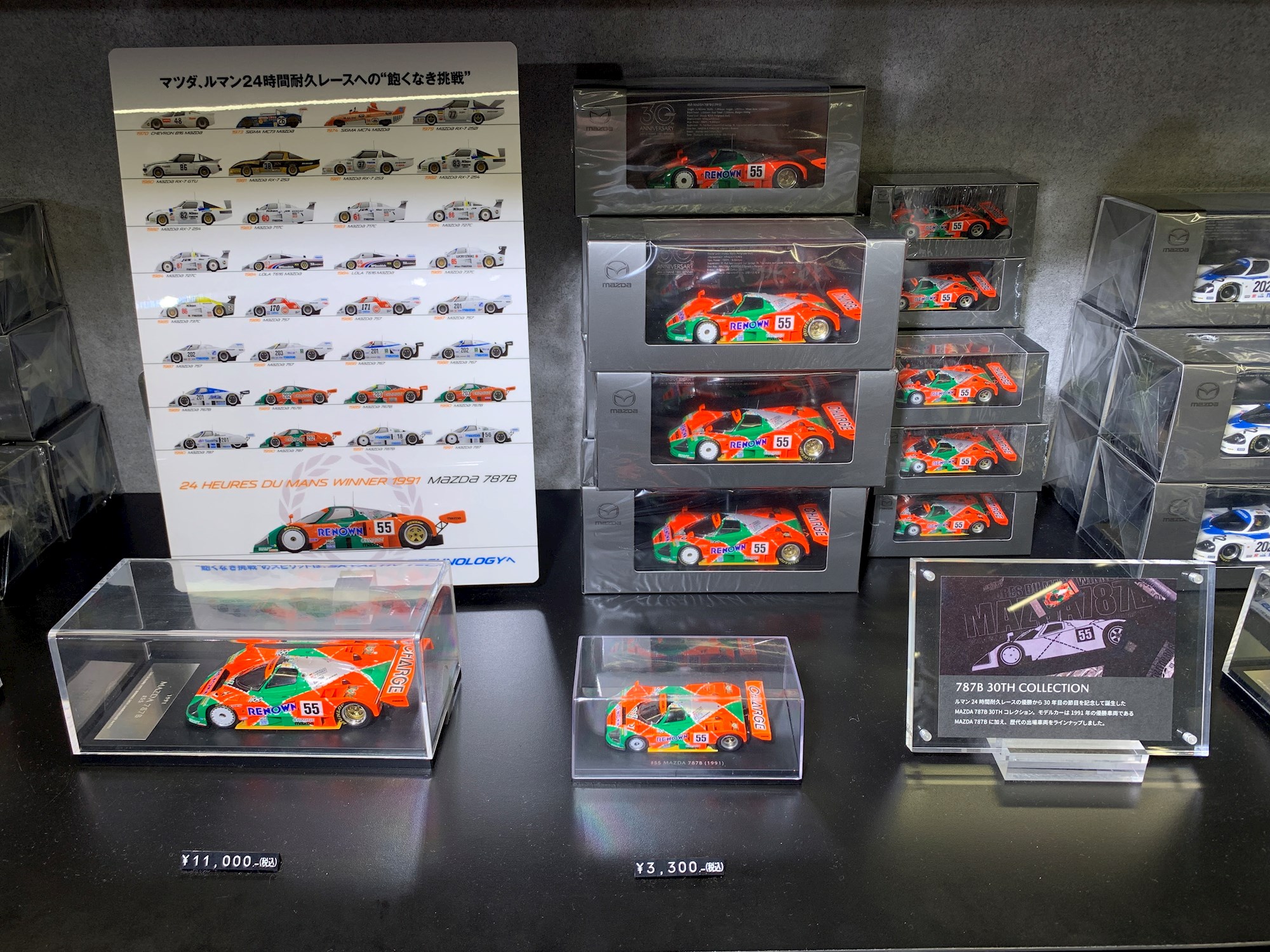
Upstairs into the museum proper, there is a very defined, very Japanese path to take, with supporting info in both Japanese and English, largely listed in chronological order.
Zone 1 details the history of Mazda from 1920-1959, its origins in cork, to its first three-wheeled truck Mazda-Go, Toyo Kogyo’s first automobile in 1931. It carries both Mazda and Mitsubishi branding on the tank, as Mazda was yet to establish a dealer network, so partnered with Mitsubishi.
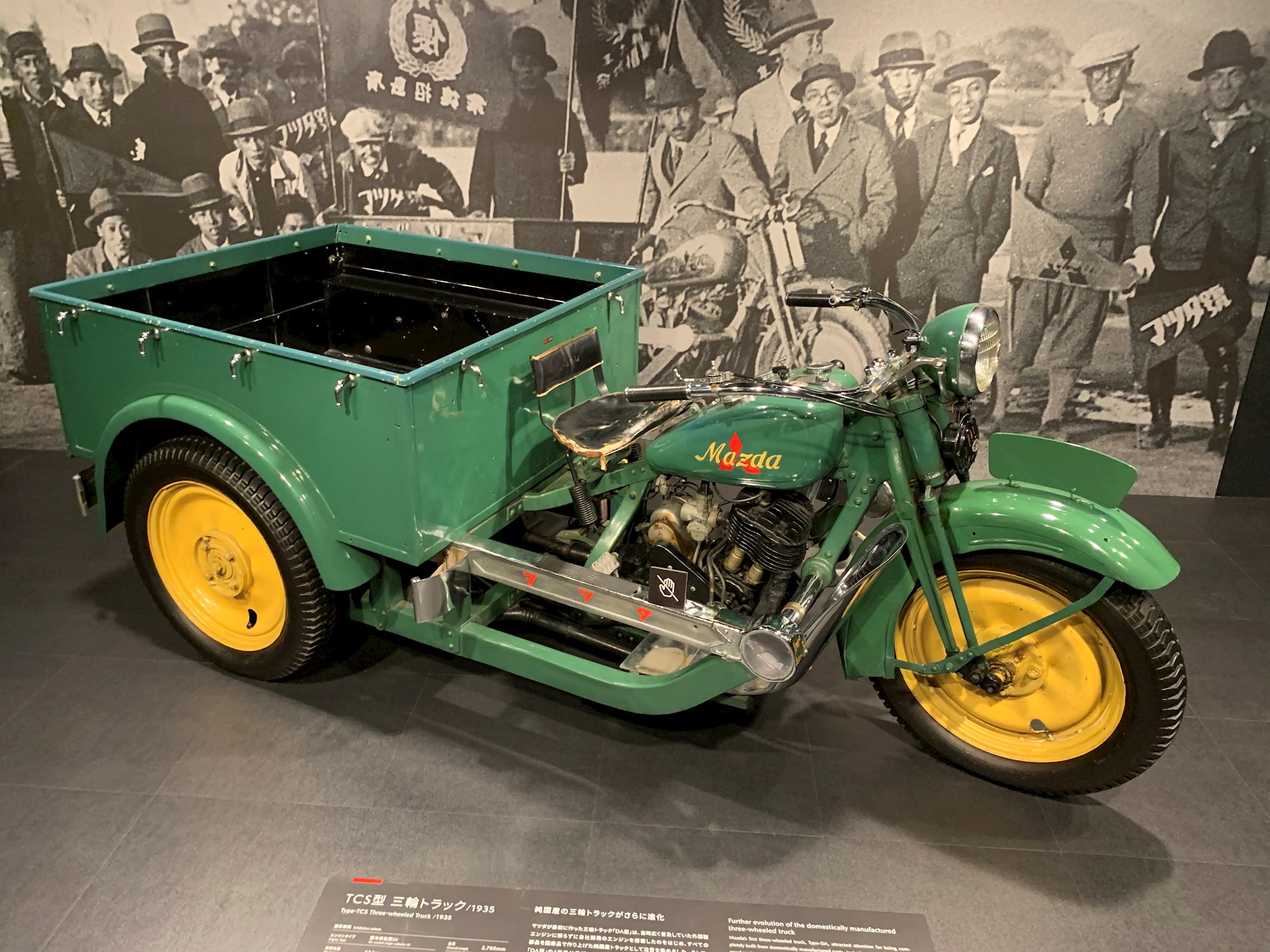
Zones 2 through 8 details 1960 to today, running from Mazda’s first R360 Coupe, the gold Carol 600 which sold 1million units, through to the range of early Mazda rotaries, from the Mazda Cosmo Sports, to an RX-3, RX-5 and three models of RX-7.
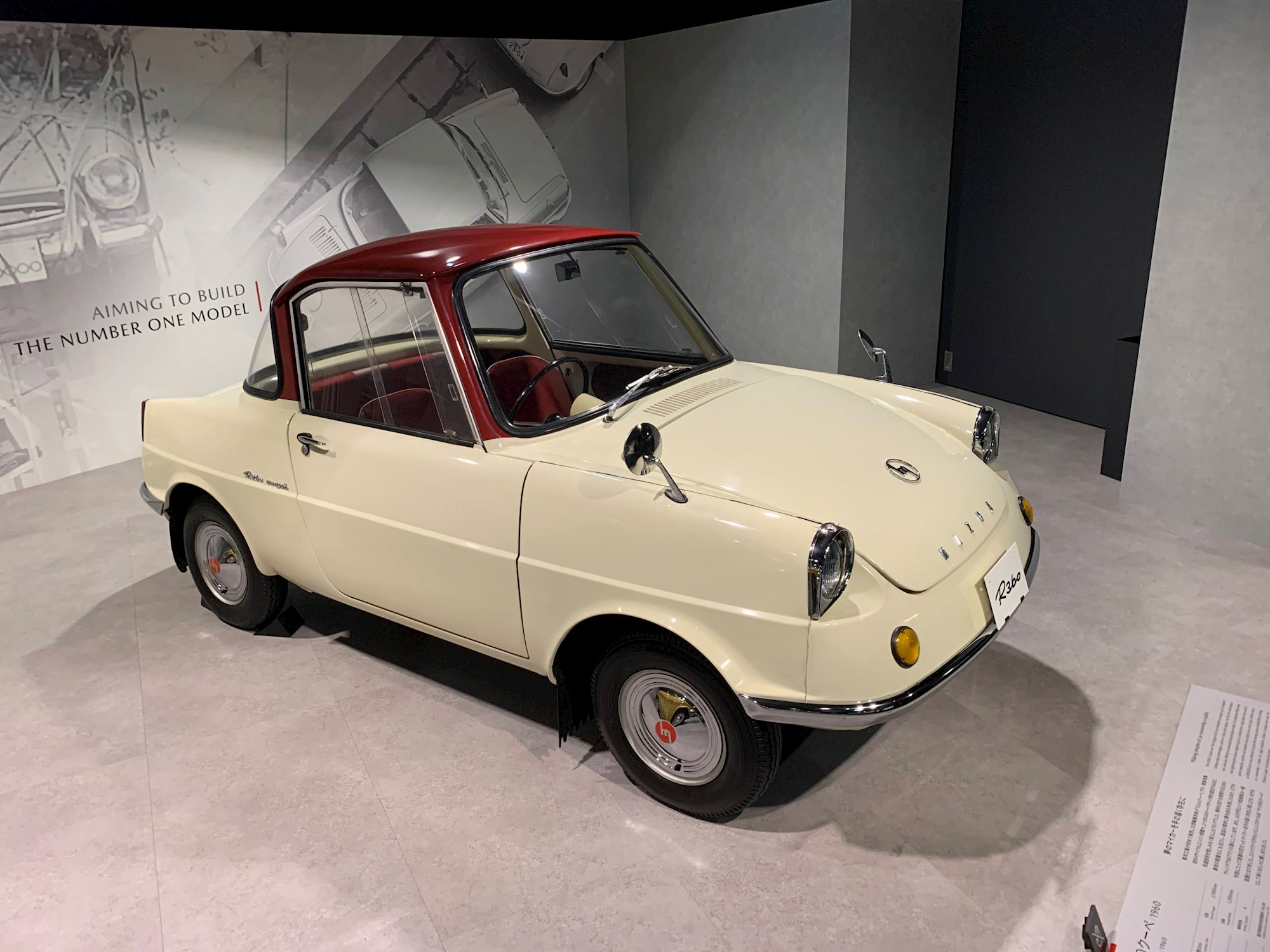
There’s Mazda’s stillborn 4.0-litre V12 engine on display, that was destined for the prestige Amati 1000 luxury sedan in the early 1990s, and bolted to a five-speed manual.
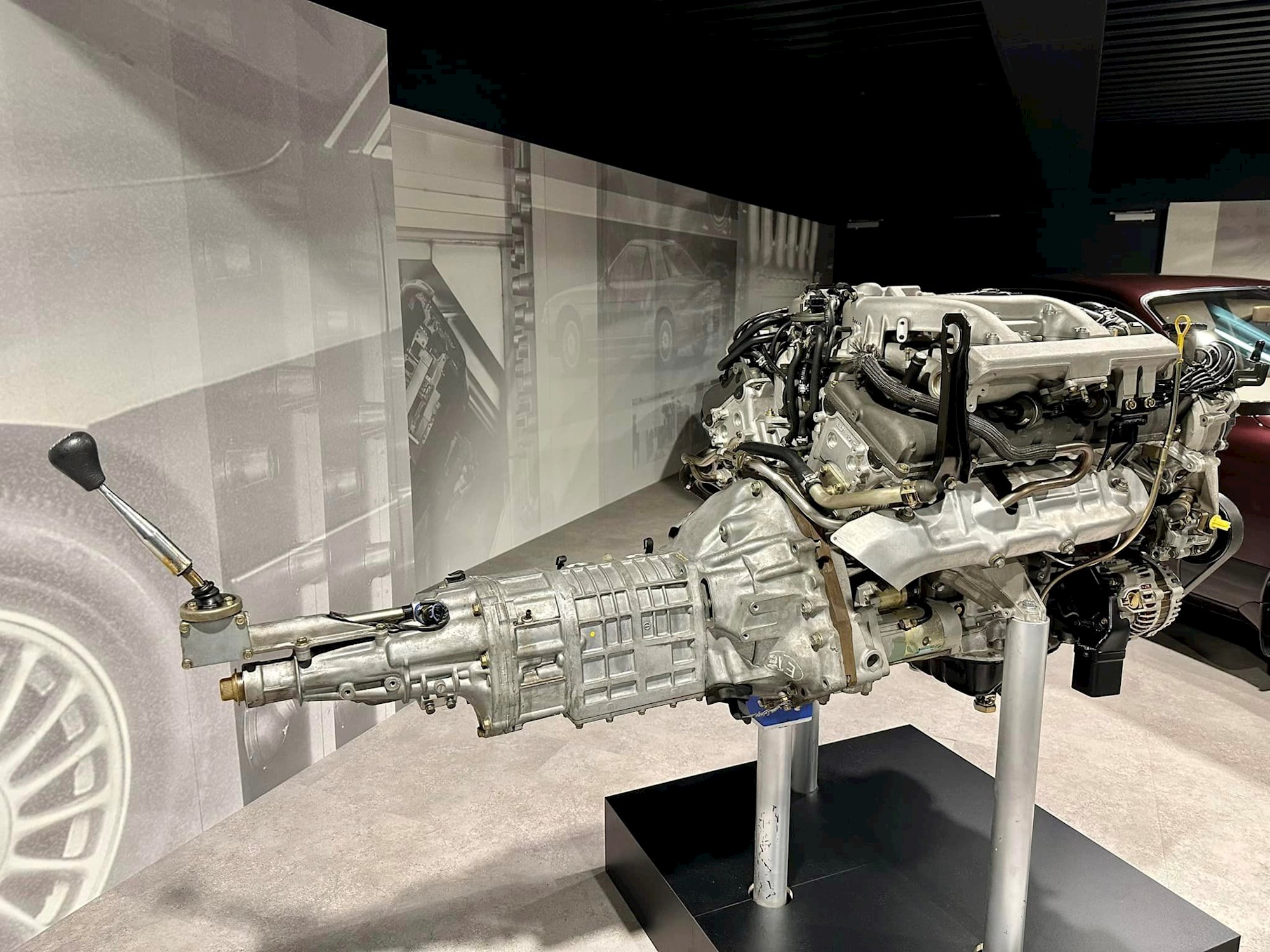
Mazda’s iconic and enduring Eunos Roadster/MX-5 is there, from its first year of 1989, as is the 3 rotor Mazda/Eunos Cosmo.
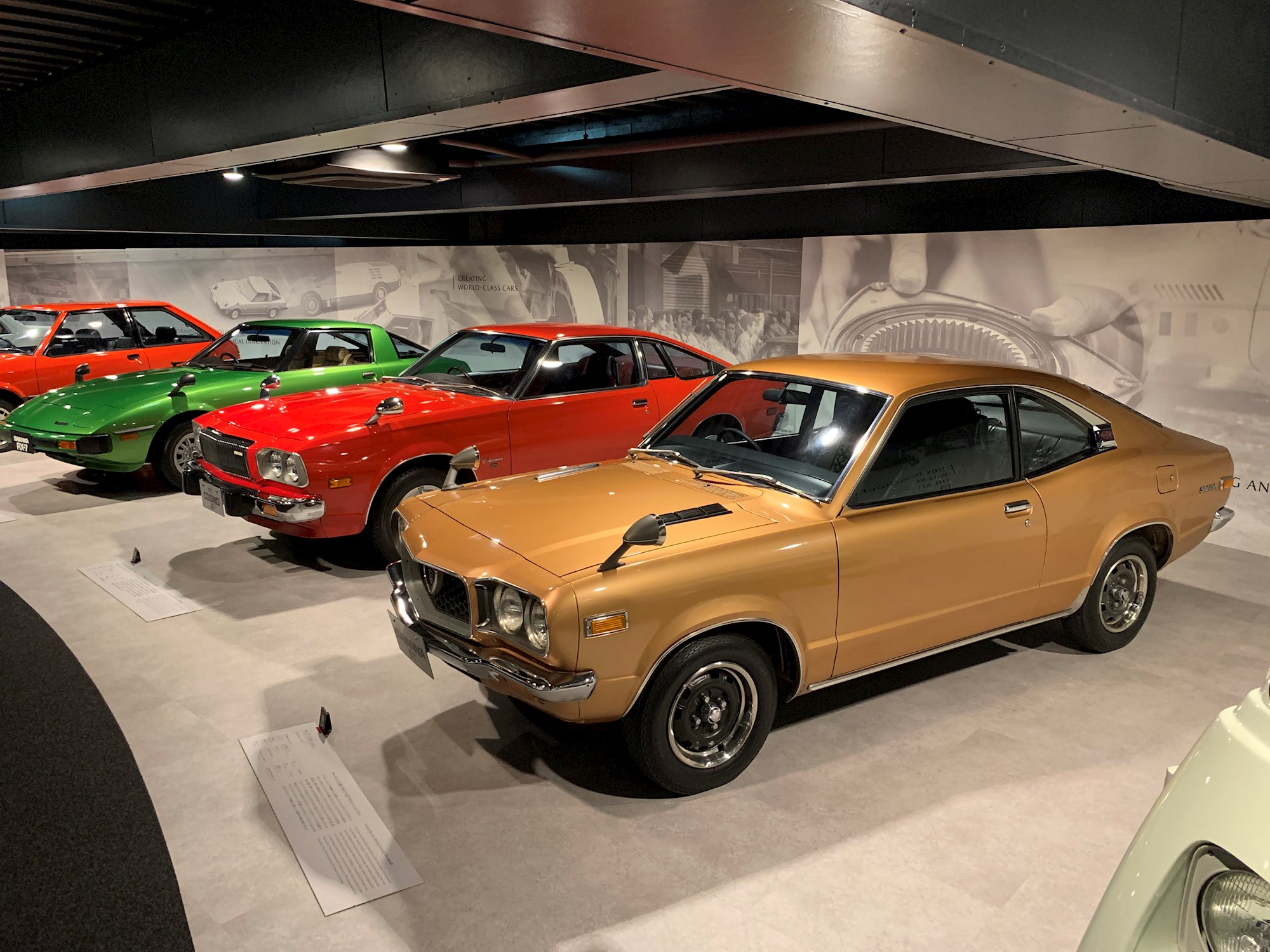
Turning the corner is a pair of race cars, a Familia Presto/R100 Coupe, similar to the ones that ran in the 1969 and 1970 Spa 24 Hour races, and the RX-7 of Carlsson/Melander that finished 3rd in the Greece round of the 1985 Group B World Rally Championship.
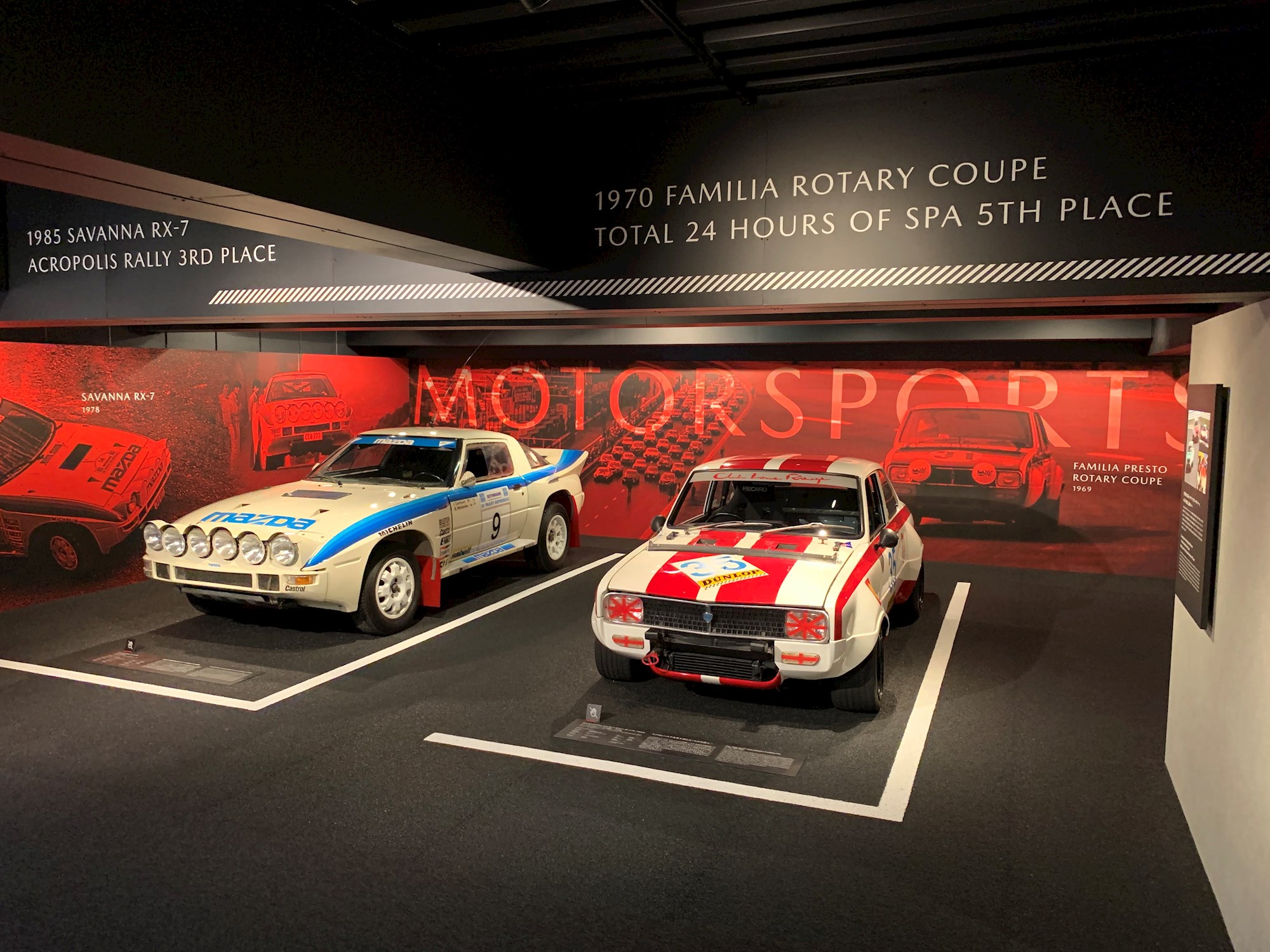
Without doubt the museum’s highlight is a Japanese hero, the Mazda 787B, the actual car that took victory at the 1991 Le Mans 24 Hour race, the first victory for a Japanese car and the first – and last – for a rotary engine. Fittingly, the 26B quad-rotor peripheral port engine is also on display alongside the car, with its variable-length intake trumpets, along with other regalia, such as the race team jackets, tyres, tools and the trophy cabinet, with the actual 1991 Le Mans trophy.
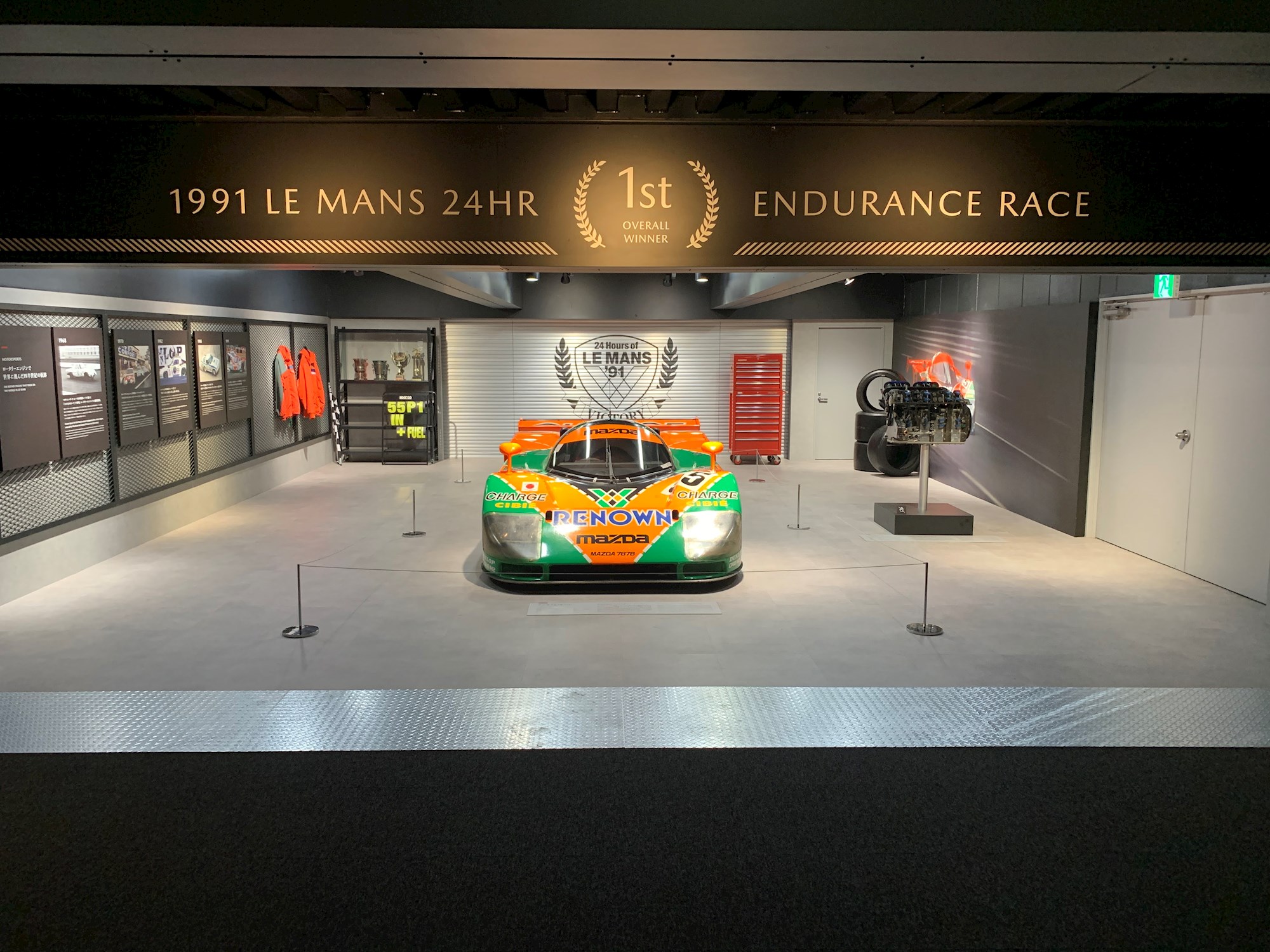
It’s an ethereal discovery and event seeing this car up close, with all its patina, arguably one of the most significant race cars of all time, and one of the most unique and best sounding. So it’s also good to see and hear a big TV and video on loop of the car in action, offering an audible addition to the room that is effectively a shrine to a history making car.
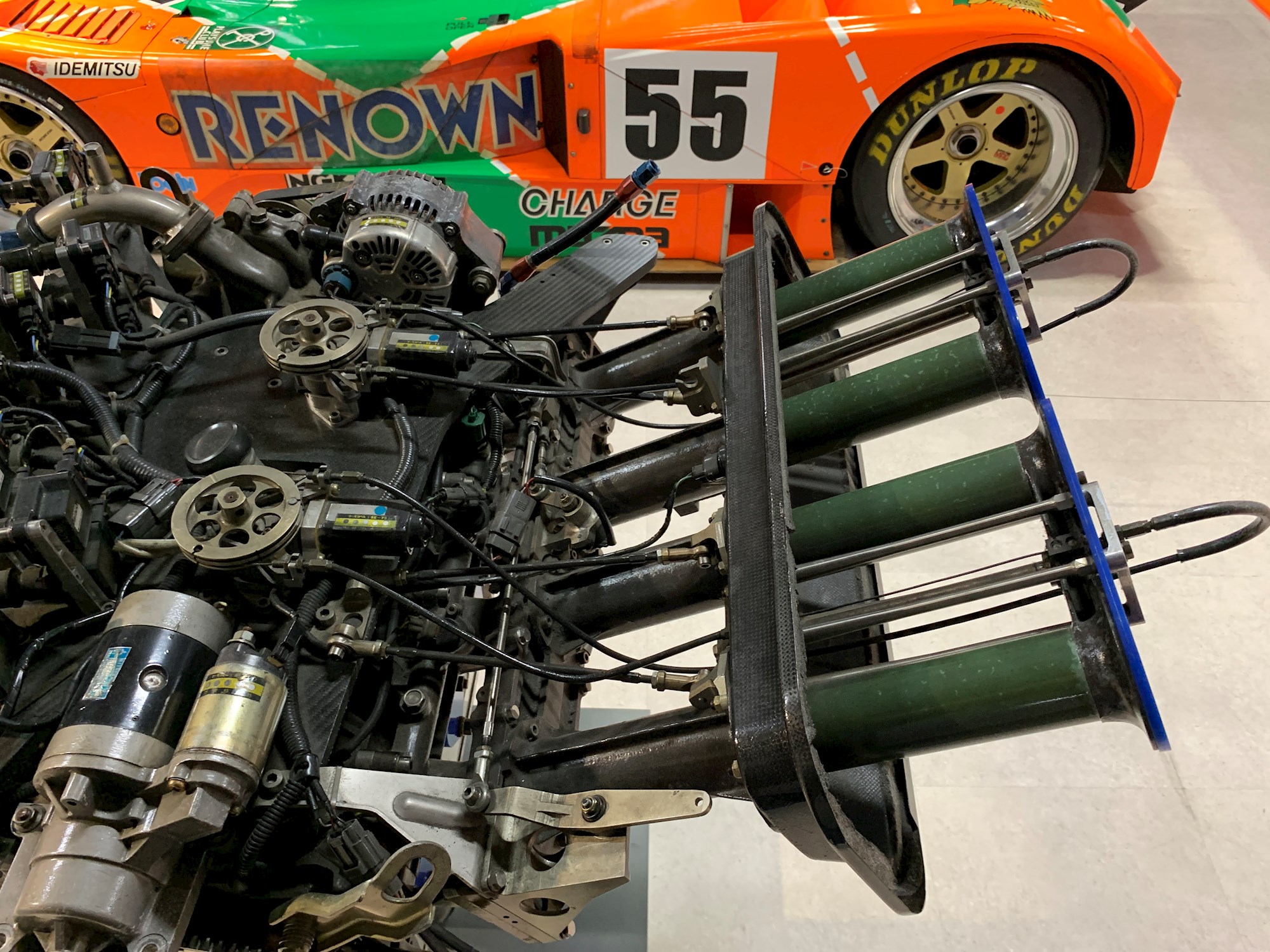
The museum continues on to a technology zone, where the range of SkyActiv engines are on display, along with an actual crash-tested Mazda CX-30. There are displays about the manufacturing process, from a scale clay model to the zebra stripe lighting designed to highlight body curves and any imperfections.
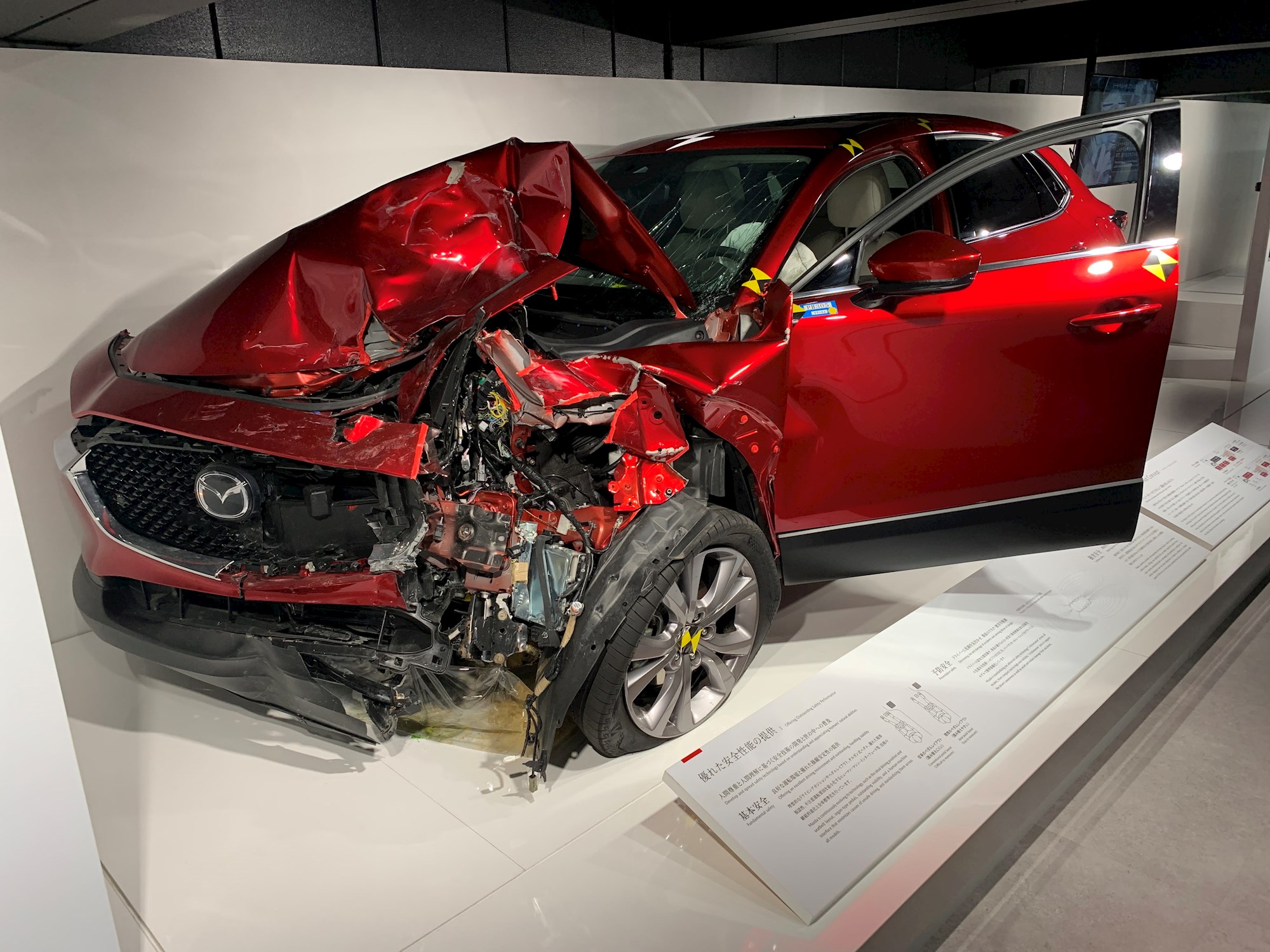
While cameras temporarily pause for the entry into the assembly line - this area is for eyes only as it passes over a production line - Zone 10 resumes with a look into the next 100 years, with a display of Mazda’s futuristic concepts such as the RX-Vision and Vision Coupe, and the LM55 Vision Concept, as seen in PlayStation’s Gran Turismo 7, effectively a modern iteration of the Le Mans-winning 787B.
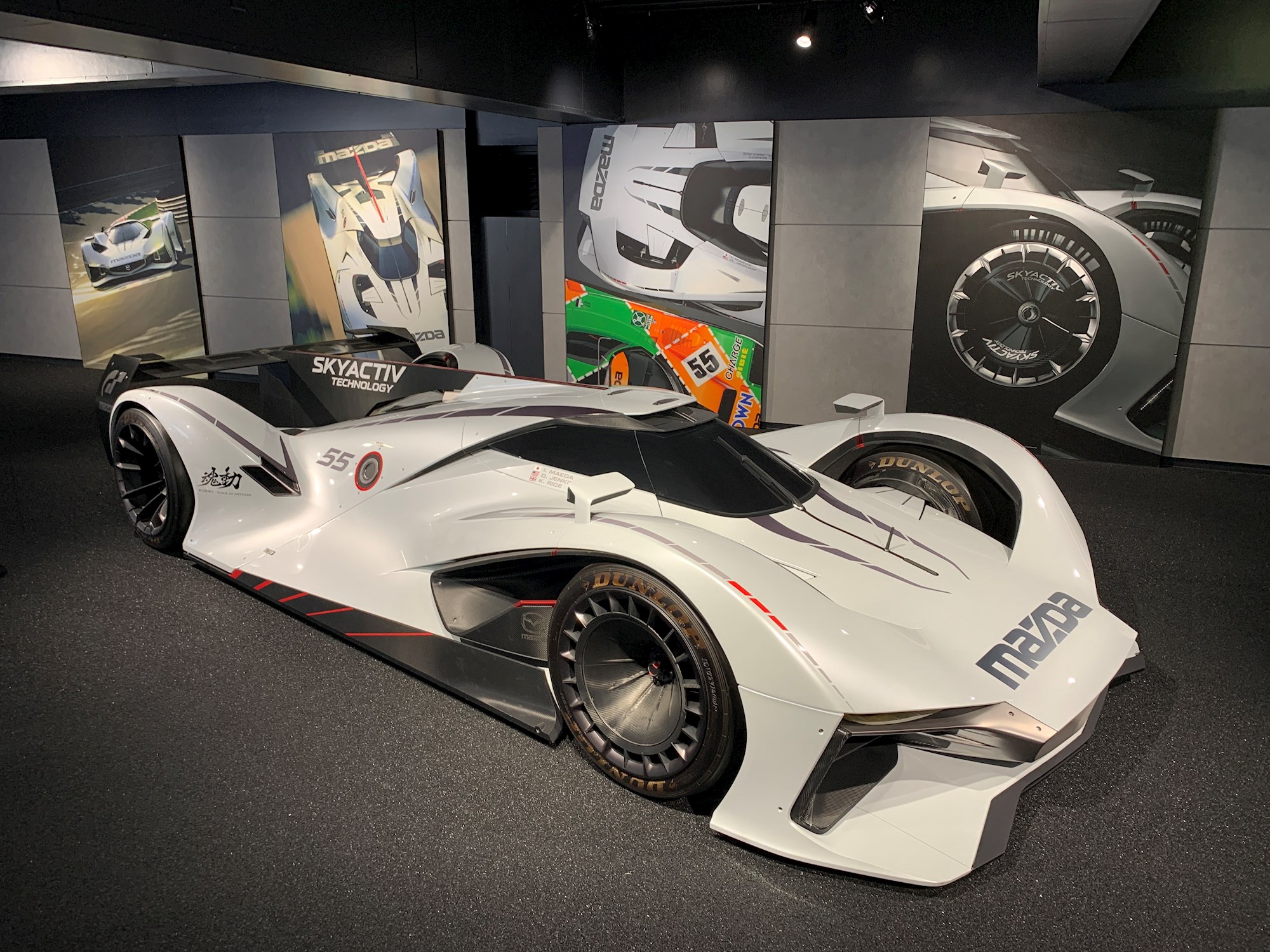
And as for the remains of Mazda's most famous concept car, the Furai, which burnt to the ground in 2008 during a Top Gear UK test? Nobody seems to know...
Mazda Museum: a must see for any Mazda enthusiast, motorsport or car fan, but even for those not able to make the big trip all the way to Hiroshima, a little more attainable via the wonders of the internet and Mazda’s museum website - and of course our full walk-through video. Enjoy!
READ MORE: First drive, new Mazda CX-60
READ MORE: The making of a CX-60, Mazda Hofu factory












































































